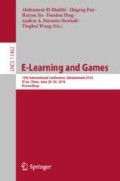Abstract
The heterogenous areas of the polarimetric synthetic aperture radar (PolSAR) image are hardly to be classified into semantic homogenous regions due to the complex terrain structures. In order to overcome these disadvantages, a PolSAR image classification method is proposed based on the multi-feature learning and the topic model. The proposed method makes use of three kinds of features to formulate the visual codewords. Then, the higher level features are learned by the topic model for classification. Experimental results illustrate that the proposed method can obtain better performance than the state-of-art methods especially for the heterogenous areas.
Access this chapter
Tax calculation will be finalised at checkout
Purchases are for personal use only
References
Zou, B., Lu, D., Zhang, L., Moon, W.M.: Eigen-decomposition-based four-component decomposition for polsar data. IEEE J. Sel. Top. Appl. Earth Obs. Remote Sens. 9(3), 1286–1296 (2016)
Cloude, S.R., Pottier, E.: An entropy based classification scheme for land applications of polarimetric SAR. IEEE Trans. Geosci. Remote Sens. 35(1), 68–78 (1997)
Zhao, L., Yang, J., Li, P., Shi, L., Xu, J.: Unsupervised classification of the weak backscattering scatterers by the use of PolSAR imagery. In: Geoscience and Remote Sensing Symposium, pp. 4714–4717 (2016)
Yang, S., Hao, H.X.: Unsupervised polarimetric synthetic aperture radar image classification based on sketch map and adaptive Markov random field. J. Appl. Remote Sens. 10(2), 025008 (2016)
Liu, F., et al.: Hierarchical semantic model and scattering mechanism based PolSAR image classification. Pattern Recogn. 59(C), 325–342 (2016)
Xing, H., Meng, Y., Hou, D., Song, J., Xu, H.: Employing crowdsourced geographic information to classify land cover with spatial clustering and topic model. Remote Sens. 9(6), 602 (2017)
Huynen, J.R.: The stokes matrix parameters and their interpretation in terms of physical target properties. In: Proceedings of SPIE: The International Society for Optical Engineering, vol. 1317, pp. 195–207 (1990)
He, C., Li, S., Liao, Z., Liao, M.S.: Texture classification of PolSAR data based on sparse coding of wavelet polarization textons. IEEE Trans. Geosci. Remote Sens. 51(8), 4576–4590 (2013)
Acknowledgments
This work was carried out with the part-supports of the National Natural Science Foundation of China (Grant Nos. 61502382,61472204, and 61472319).
Author information
Authors and Affiliations
Corresponding author
Editor information
Editors and Affiliations
Rights and permissions
Copyright information
© 2019 Springer Nature Switzerland AG
About this paper
Cite this paper
Shi, J., Jin, H., Wang, Y., Lv, Z., Liu, L. (2019). Latent Topic Model Based Multi-feature Learning for PolSAR Terrain Classification. In: El Rhalibi, A., Pan, Z., Jin, H., Ding, D., Navarro-Newball, A., Wang, Y. (eds) E-Learning and Games. Edutainment 2018. Lecture Notes in Computer Science(), vol 11462. Springer, Cham. https://doi.org/10.1007/978-3-030-23712-7_34
Download citation
DOI: https://doi.org/10.1007/978-3-030-23712-7_34
Published:
Publisher Name: Springer, Cham
Print ISBN: 978-3-030-23711-0
Online ISBN: 978-3-030-23712-7
eBook Packages: Computer ScienceComputer Science (R0)

